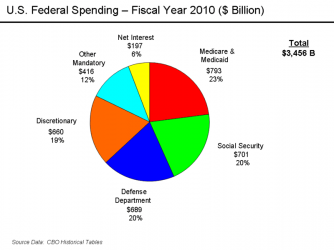The United States uses approximately 390 million gallons of
gasoline every day,a large proportion of which comes from
imported oil.
While the price fluctuates, the average price of
gasoline is about $2.65 per gallon.
There is an additional hidden cost to our gasoline
something that isnt included in the price at the pump.
The added cost is the $215.4 billion each year that the
U.S. military spends of our tax dollars to secure access
to imported energy.
This means, in addition to the $2.65/gallon
price of gasoline, we pay an extra $0.57
for each of the 142 billion gallons of
gasoline we use every year.
$215.4 billion represents nearly 30% of the federal defense
budget just to gain access to foreign energy. This is one
years worth of troops, weaponry, and most of the Iraq
war funded by taxpayer dollars.
What if that money instead paid for What if that money instead paid for What if
renewable energy technology and
jobs here at home?
National Priorities Project
gasoline every day,a large proportion of which comes from
imported oil.
While the price fluctuates, the average price of
gasoline is about $2.65 per gallon.
There is an additional hidden cost to our gasoline
something that isnt included in the price at the pump.
The added cost is the $215.4 billion each year that the
U.S. military spends of our tax dollars to secure access
to imported energy.
This means, in addition to the $2.65/gallon
price of gasoline, we pay an extra $0.57
for each of the 142 billion gallons of
gasoline we use every year.
$215.4 billion represents nearly 30% of the federal defense
budget just to gain access to foreign energy. This is one
years worth of troops, weaponry, and most of the Iraq
war funded by taxpayer dollars.
What if that money instead paid for What if that money instead paid for What if
renewable energy technology and
jobs here at home?
National Priorities Project


